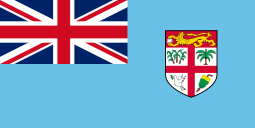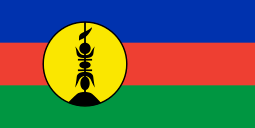Paracalliope
| Paracalliope | |
|---|---|
| Scientific classification | |
| Kingdom: | Animalia |
| Phylum: | Arthropoda |
| Subphylum: | Crustacea |
| Class: | Malacostraca |
| Order: | Amphipoda |
| Suborder: | Gammaridea |
| Family: | Paracalliopiidae |
| Genus: | Paracalliope Stebbing, 1899 |
| Type species | |
| Calliope fluviatilis | |
Paracalliope is a genus of amphipod crustaceans that live in Australasia. They include the most common freshwater amphipods in New Zealand, where they are particularly frequent in slow-flowing reaches of rivers.[2] They shelter among weed beds and are important prey items for fish such as the New Zealand smelt, Retropinna retropinna, which are in turn important prey for the freshwater eels Anguilla australis and Anguilla dieffenbachii. Paracalliope acts as an intermediate host for the nematode Hedruris spinigera, which can thus reach their primary host, the eel.[3]
Species
Ten species have been described:[4][5]
- Paracalliope australis (Haswell, 1880) –

- Paracalliope bacescui Ortiz & Lalana, 1997 –

- Paracalliope dichotomus Morino, 1991 –

- Paracalliope fluviatilis (Thomson, 1879) –

- Paracalliope karitane Barnard, 1972 –

- Paracalliope larai Knott, 1975 –

- Paracalliope lowryi Barnard & Drummond, 1992 –

- Paracalliope mapela Myers, 1985 –

- Paracalliope novaecaledoniae Ruffo & Paiotta, 1972 –

- Paracalliope vicinus Barnard & Drummond, 1992 –

See also
| Wikispecies has information related to Paracalliope |
- Video of Paracalliope from Waikatere City Council
References
- ↑ "Genus Paracalliope Stebbing, 1899". Australian Faunal Directory. Department of the Environment, Water, Heritage and the Arts. 9 March 2010. Retrieved 13 April 2010.
- ↑ "Paracalliope". More information on macroinvertebrates. Waitakere City Council. Retrieved 13 April 2010.
- ↑ D. J. Jellyman (1989). "Occurrence of the nematode Hedruris spinigera in the stomachs of freshwater eels". New Zealand Journal of Zoology. 16: 185–189. doi:10.1080/03014223.1989.10422567.
- ↑ Wim Vader (2005). "New amphipod species described in the period 1974–2004, ordered by family" (PDF). Amphipod Newsletter. 30: 1–56.
- ↑ Graham D. Fenwick (2001). "The freshwater Amphipoda (Crustacea) of New Zealand: a review". Journal of the Royal Society of New Zealand. 31 (2): 341–363. doi:10.1080/03014223.2001.9517658.
This article is issued from
Wikipedia.
The text is licensed under Creative Commons - Attribution - Sharealike.
Additional terms may apply for the media files.